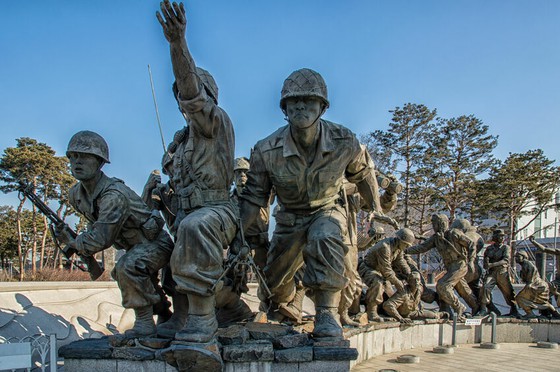 |
The population of Koreans who lived in Japan increased from 2527 in 1911 (*the year after the annexation of Japan and Korea) to 1,936,843 in 1944, just before the end of the war. It increased by more than 760 times in 33 years.
During this period, the Korean population in Japan recorded a year-on-year decrease only in 1914, and all the remaining years recorded a year-on-year increase. In 1917, it recorded an increase of more than 150% over the previous year.
Starting with 2527 in 1911 and growing to more than 1.93 million in 1944, it is said that the average annual growth rate was more than 22% over the entire period.
What should be noted is that despite the Japanese government taking measures to restrain Koreans from traveling to Japan in 1919 in the wake of the "March 1st Movement (* Sam-il Movement)", they went to Japan after that. The point is that the scale of Koreans going to Japan has not changed.
In addition, the population of Koreans in Japan in 1923, when the Great Kanto Earthquake struck, was 84,415, but it is also noteworthy that the population of Koreans in Japan in 1924, the following year, increased significantly to 118,152.
In a nutshell, it can be seen that during the Japanese colonial era, Koreans on the Korean Peninsula constantly travelled to Japan for various reasons such as employment, study, and pursuit of new opportunities.
● Population of Koreans living in Japan (* Source: Yoshio Morita, "History of Koreans in Japan told by numbers")
1911, 2527 people
1912, 3171 people (year-on-year increase rate, 25.5%)
1913, 3635 people (14.6%)
1914, 3542 people (-2.6%)
1915, 3917 people (10.6%)
1916, 5624 people (43.6%)
1917, 14,502 people (157.9%)
1918, 22,411 people (54.5%)
1919, 26,605 people (18.7%) * Measures to restrict Koreans from traveling to Japan
1920, 30,189 people (13.5%)
1921, 38,651 people (28.0%)
1922, 53,722 people (39.0%)
In 1923, 80,15 people (49.7%) ※ Born from the Great Kanto Earthquake
In 1924, 118,152 people (46.9%)
In 1925, 129,870 people (9.9%)
In 1926, 142,798 people (10.7%)
In 1927, 165,286 people (14.9%)
In 1928, 238,102 (44.0%)
In 1929, 275,206 people (15.6%)
1930, 298,091 people (8.3%)
In 1931, 311,247 people (4.4%)
In 1932, 390,543 people (25.5%)
In 1933, 456,217 people (16.8%)
In 1934, 537,695 people (17.8%)
In 1935, 625,678 people (16.4%)
In 1936, 69 thousand 501 people (10.4%)
In 1937, 735,689 people (6.5%)
In 1938, 79,978 people (8.7%)
In 1939, 967,591 people (21.0%)
1940, 1.19 million 444 people (23.0%)
In 1941, 1,469,000 (23.4%)
In 1942, 1.625254 people (10.6%)
In 1943, 1,882,456 people (15.8%)
1944, 1,936,843 people (2.9%) * Started recruitment to Koreans
● Current status of Korean youth enlistment in the Japanese Army
1938: Over 2900 volunteers to recruit 400 (competition rate, 7.2 to 1)
1939: More than 12,300 volunteers to recruit 600 (20.5 to 1)
1940: Over 84,400 volunteers to recruit 3,000 (28.1 to 1)
1941: Over 144,700 volunteers to recruit 3,000 (48.2 to 1)
1942: More than 254,300 volunteers to recruit 4,500 (56.5 to 1)
1943: More than 303,400 volunteers to recruit 5,330 (56.9 to 1)
In 1940 (competition rate, 28.1 to 1), a young man (Lee) in Hoengseong-gun, Gangwon-do, who volunteered but dropped out and was pessimistic about not being able to join the Japanese army, committed suicide.
* This article is a Japanese translation of a contribution by Mr. LUDA, a conservative Korean conservative fund. The Korean version has already been published in the Korean media. We are responsible for the accuracy of the translation.
2021/09/22 21:09 KST


